A rectangular block of mass M and height a is resting on a smooth level surface. A force F is applied to one corner as shown in Fig. At what point should a parallel force 3F be applied in order that the block shall undergo pure translational motion? Assume normal contact force a between the block and surface passes through the centre of gravity of the block.
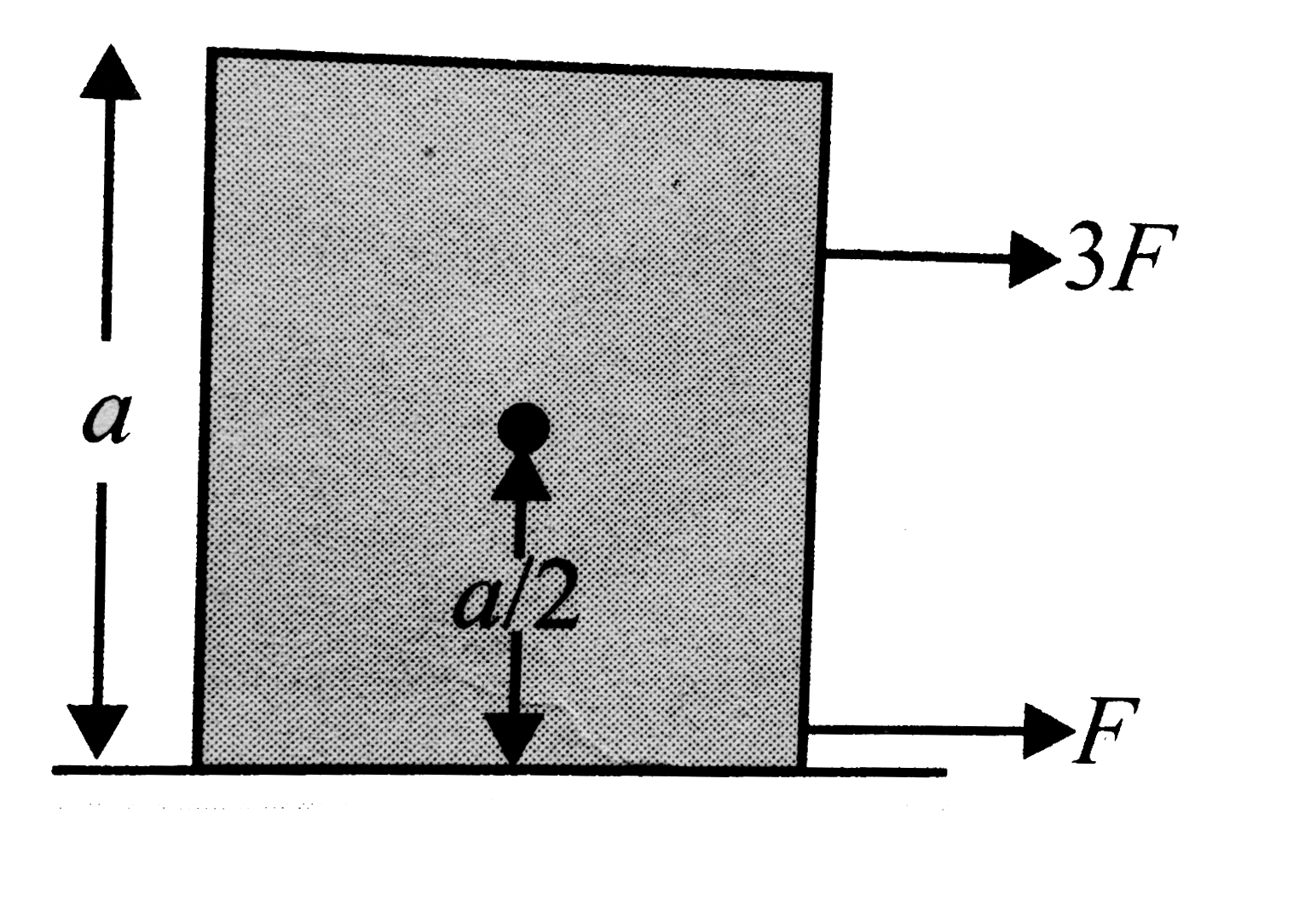
a3 vertically above centre of gravity
a6 vertically above centre of gravity
no such point exists
it is not possible
The correct Answer is:B
The free body diagram of the block can be drawn as shown.
As the body has to move in pure translational motion, the torque about the centre of gravity must be zero.
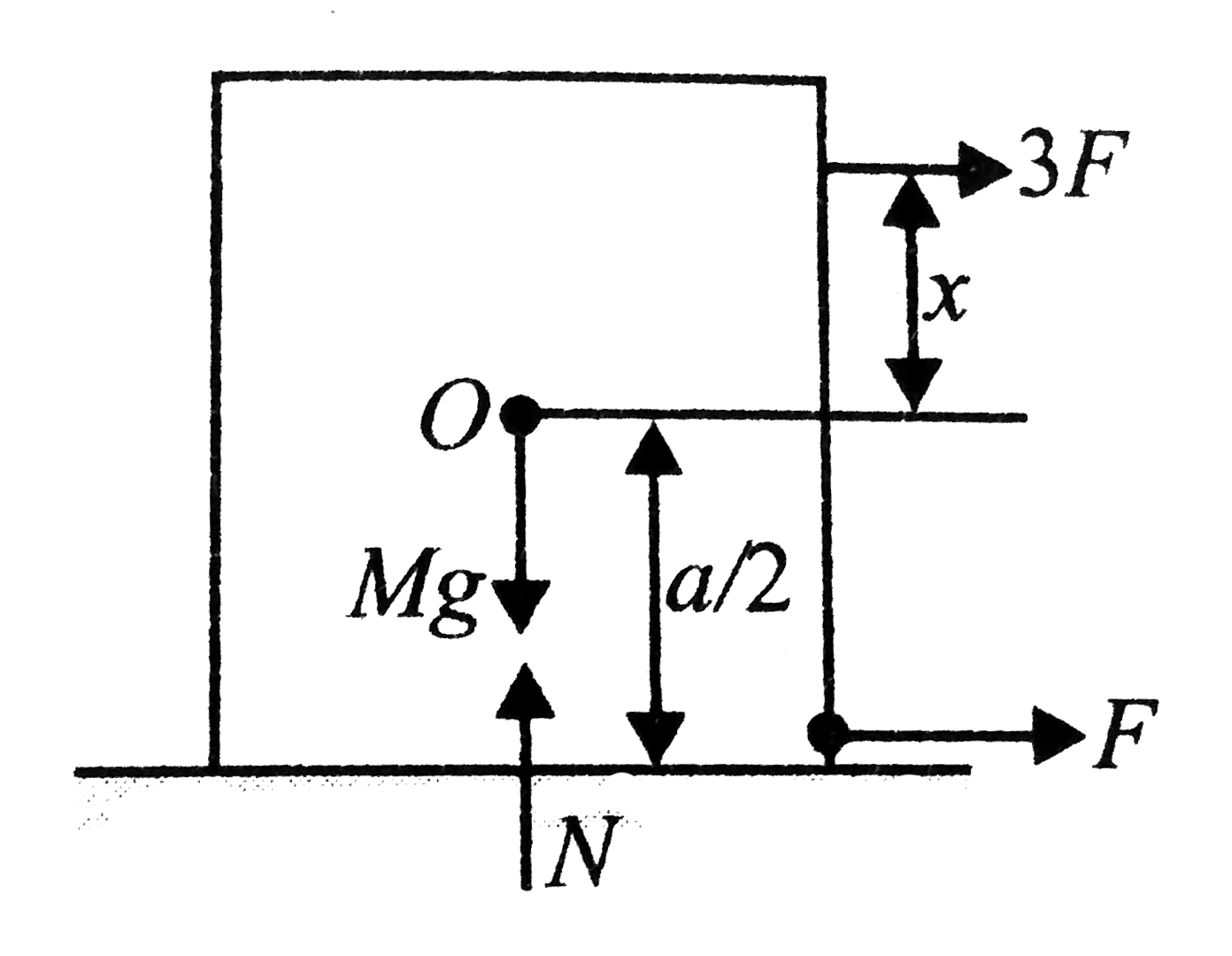
3F×x=F×a2⇒x=a6
Topper's Solved these Questions
- RIGID BODY DYNAMICS 1Book:CENGAGE PHYSICS ENGLISHChapter:RIGID BODY DYNAMICS 1Exercise:Multiple Correct
Explore 9 Videos
- RIGID BODY DYNAMICS 1Book:CENGAGE PHYSICS ENGLISHChapter:RIGID BODY DYNAMICS 1Exercise:Linked Comprehension
Explore 28 Videos
- RIGID BODY DYNAMICS 1Book:CENGAGE PHYSICS ENGLISHChapter:RIGID BODY DYNAMICS 1Exercise:Subjective
Explore 12 Videos
- PROPERTIES OF SOLIDS AND FLUIDSBook:CENGAGE PHYSICS ENGLISHChapter:PROPERTIES OF SOLIDS AND FLUIDSExercise:INTEGER_TYPE
Explore 2 Videos
- RIGID BODY DYNAMICS 2Book:CENGAGE PHYSICS ENGLISHChapter:RIGID BODY DYNAMICS 2Exercise:Interger
Explore 2 Videos
Similar Questions
A rigid body is in pure rotation, that is, undergoing fixed axis rotation. Then which of the following statement(s) are true?
View SolutionA uniform rod of mass M=2kg and length L is suspended by two smooth hinges 1 and 2 as shown in Fig. A force F=4N is applied downward at a distance L/4 from hinge 2. Due to the application of force F, hinge 2 breaks. At this instant, applied force F is also removed. The rod starts to rotate downward about hinge 1. (g=10m/s2)
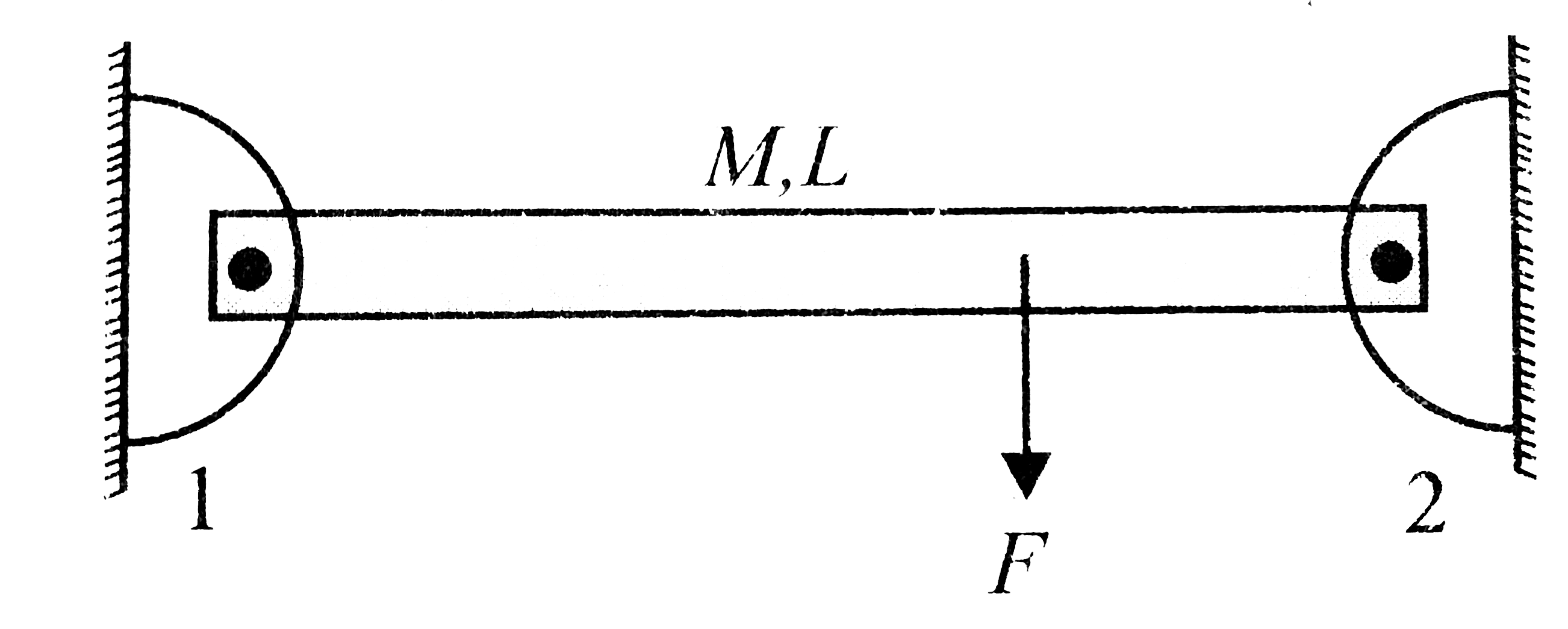
The reaction at hinge 1, before hinge 2 breaks, is
View SolutionIn the instant shown in the diagram the board is moving up (vertically) with velocity v. The drum winds up at a constant rate ω. If the radius of the drum is R and the board always remains horizontal, find the value of velocity in terms of R,θ,ω.
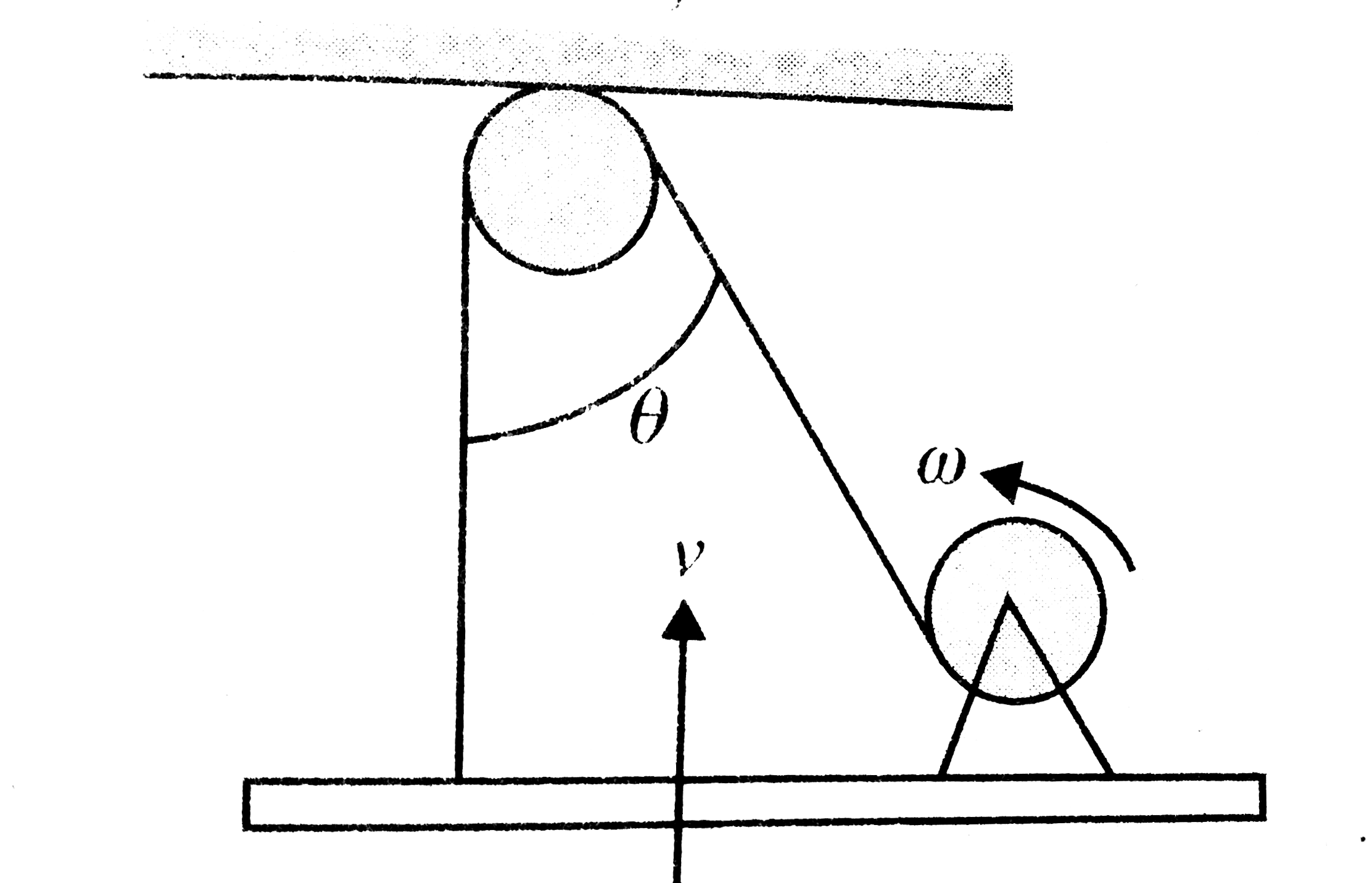
View SolutionTwo soap bubbles A and B are kept in aclosed chamber where the air is maintained at pressure 8Nm2. The radiiof bubbles A and B are 2cm and 4 cm , respectively. Surface tension of the soap-water used to make bubbles is 0.04 N/m. The ratio of nB/nAis ( where nA and nB are the numbe of moles of air in bubbles A and B,respectively.)
[Neglect the effect of gravity]
View SolutionA lamina is made by removing a small disc of diameter 2R from a bigger disc of uniform mass density and radius 2R, as shown in the figure. The moment of inertia of this lamina about axes passing though O and P is IOandIP respectively. Both these axes are perpendicular to the plane of the lamina. The ratio IPIO is
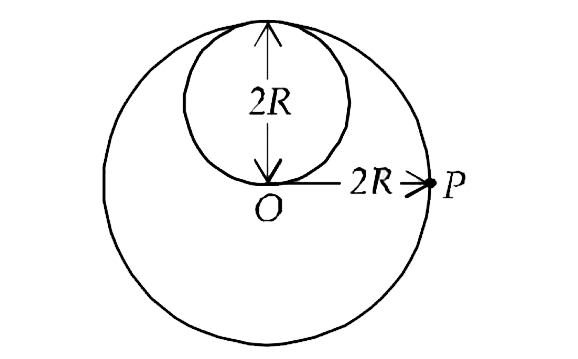
View SolutionA block of mass M is kept on as rough horizontal surface. The coefficient of static frictionbetween the block and the surface is μ. The block is to be pulled by applying a force to it. What minimum force is needed to slide the block? In which direction should this force act?
View SolutionTwo blocks of masses 1 kg and 2 kg are placed in contact on a smooth horizontal surface as shown in fig. A horizontal force of 6N is applied d(a) on a 1-kg block. Find the force of interaction of the blocks. .
View SolutionTwo blocks A and B each of mass m are placed on a smooth horizontal surface. Two horizontal force F and 2F are applied on blocks A and B, respectively, as shown in fig. Block A does not slide on block B. Then then the normal reaction acting between the two blocks is (assume no friction between the blocks)
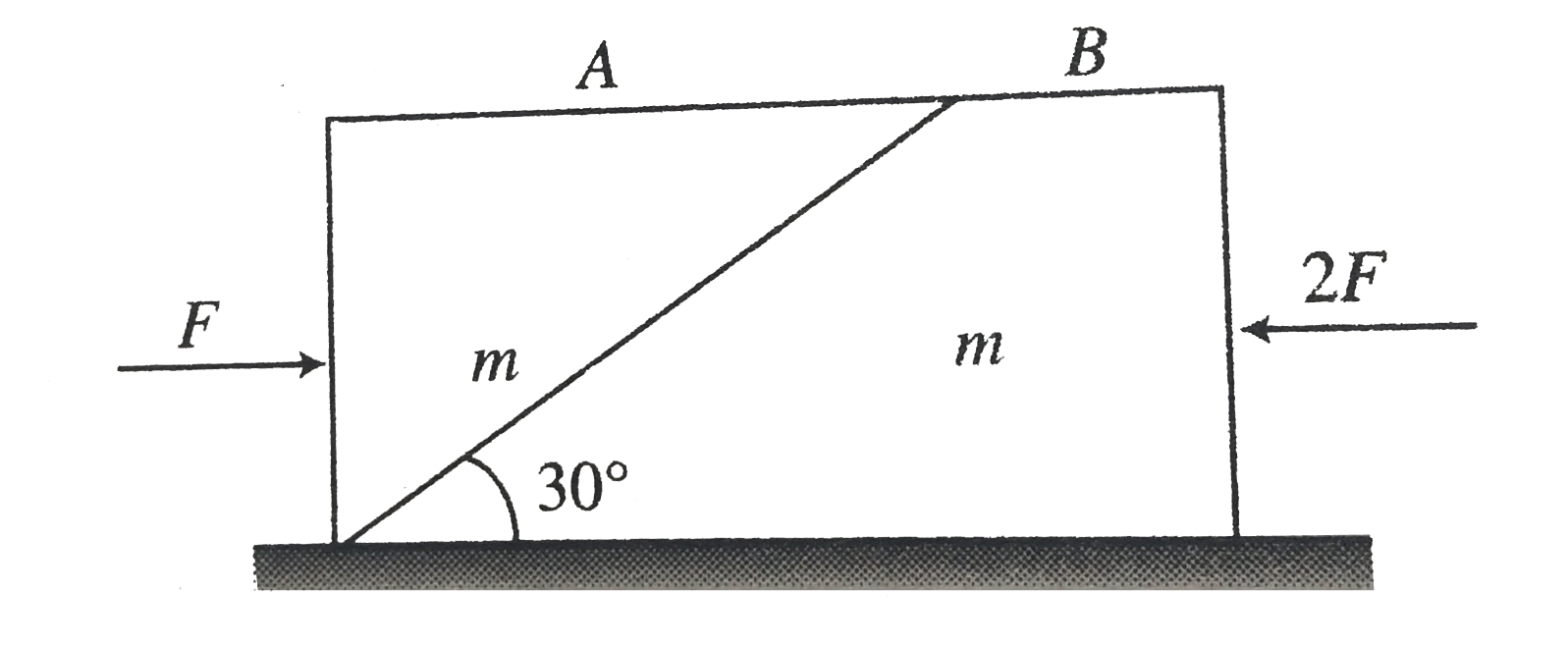
View SolutionA rectangular block of mass M and height a is resting on a smooth level surface. A force F is applied to one corner as shown in Fig. At what point should a parallel force 3F be applied in order that the block shall undergo pure translational motion? Assume normal contact force a between the block and surface passes through the centre of gravity of the block.
View SolutionThree identical blocks, each having a mass M , are pushed by a force F on a frictionless table as shown in (figure) What is the acceleration of the blocks? What is net force on block A ? What force does A apply on B ? What force does B apply on C ? show action reaction pairs on the contact surface of the blocks.
View SolutionIn all the given cases block are in contact and the forces are applied as shown. All the surfaces are smooth. Then in whhich of the following cases, normal reaction between the two blocks is zero.
View SolutionA block rests on a horizontal surface. A horizontal force F is applied to the block. The acceleration (a) produced in the block as a function of applied force (F) has been plotted in a graph (see figure). Find the mass of the block.
View SolutionTwo blocks of masses M_1 and M_2 are placed in contact with each other on a frictionless horizontal surface. If a force F is applied on the block of mass M, what is the contact force between the two blocks?
View SolutionA block of mass M is kept on as rough horizontal surface. The coefficient of static frictionbetween the block and the surface is μ. The block is to be pulled by applying a force to it. What minimum force is needed to slide the block? In which direction should this force act?
View SolutionTwo blocks A and B each of mass m are placed on a smooth horizontal surface. Two horizontal force F and 2F are applied on blocks A and B, respectively, as shown in fig. Block A does not slide on block B. Then then the normal reaction acting between the two blocks is (assume no friction between the blocks)
View Solution
